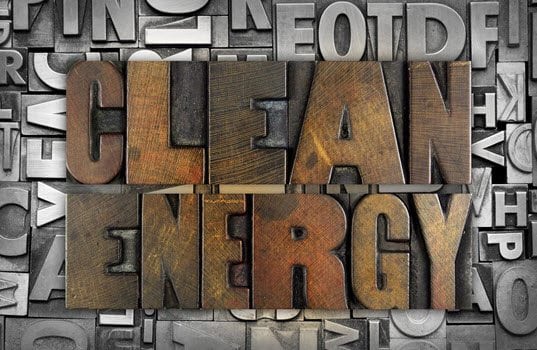In terms of fuel cost, “REB Research, makes hydrogen generators that produce 75 slpm of ultra-pure hydrogen by steam reforming methanol-water in a membrane reactor. A generator of this type produces 9.5 kg of hydrogen per day, consuming 69 gal of methanol-water. At 80¢/gal for methanol-water, and 10¢/kWh for electricity, the hydrogen costs $2.50/kg., or $5,000 over a 120,000 mile life. This is somewhat cheaper than gasoline, but about twice the dollar per mile cost of a Tesla S if only electric cost is considered. The hydrogen car is much cheaper on a per-mile basis, though when you include the fact that the battery has only a 120,000-mile life. A 120,000 mile life is short for a luxury car, and very short for a truck or bus.”(9)
The DoE Fuel Cell Technology Office released a 74-page report titled “2012 Fuel Cell Technologies Market Report.”(10) The report concludes: “the trends for the fuel cell industry were encouraging in 2012. Total fuel cell shipments increased in 2012, in terms of total units and megawatts (MW). Other notable events highlighted include:
- “Total fuel cell shipments in 2012 increased 34 percent over 2011 and 321 percent over 2008.”
- “Roughly 30,000 fuel cell systems were shipped in 2012, up from around 5,000 shipments in 2008, largely due to Japan’s residential fuel cell program,” Figure 8.
- “The number of megawatts shipped on an annual basis more than doubled between 2008 and 2012, rising from about 60 MW to more than 120 MW.”
- “The projected cost of a transportation fuel cell system was at $47 per kW in 2012 and continues to approach DOE’s target of $30 per kW.”
- “Fuel cell costs continue to decline significantly for light duty vehicles, with projected volume costs lower by more than 80 percent since 2002 and more than 35 percent since 2008.”
- “The Obama Administration implemented new incentives for fuel cell and other advanced technology vehicles when it raised the fuel economy standard in the U.S. to 54.5 mpg for cars and light-duty trucks.”
- “Cumulative global investment in fuel cell companies totaled $853.6 million between 2010 and 2012. This is a significant increase over the $671.4 million invested in fuel cell companies between 2009 and 2011.”
Another major challenge for FCEVs is a nascent infrastructure to produce, distribute, store, deliver and maintain hydrogen fuel. Today there are only ten public hydrogen-fueling stations in the United States, according to the DoE. California is spending as much as $20 million a year to help bring the number of fueling stations up to 100 within the next five years or so. There should be 28 hydrogen stations spread across California’s metropolitan areas by 2015, when all three of these hydrogen models will be for sale.
One remaining question is the reliability, power quality, endurance and longevity of mobile fuel cells.
Although fuel cells provide electricity at high efficiencies with exceptional environmental sensitivity, their long-term performance and reliability under real-world conditions remains largely unanswered.
However, according to Fuel Cells 2000, “The material handling sector has provided the fuel cell industry with an early market and technology indicator in the U.S., with deployments and orders for forklifts and lift trucks inching closer to 5,000. This includes many big name companies with multiple repeat orders, such as BMW, Coca-Cola, Procter & Gamble, Kroger and Lowe’s,” Figure 9. The report further states that fuel cells were found to last longer than batteries, and operated in freezing temperatures as low as -20° F (-29° C).”(11)
Fuel Cells 2000 reports, fuel cells last longer than batteries, and also operate in freezing temperatures, which led Walmart, a company that had already tested and deployed several hundred fuel cell forklifts at facilities in Ohio and Ontario, Canada, to choose fuel cell lift trucks for its sustainable refrigerated distribution center in Alberta, Canada. The fuel cell-powered vehicles operate in conditions as low as -20° F (-29° C).
In closing, substantial reduction of fossil fuels from all sectors of the economy by renewable energy and zero-emission vehicles is the Holy Grail of modern society. Zero-emissions vehicles come in two flavors BEV and FCEV. BEVs longer sales history and wider public-private support give them an apparent competitive advantage over FCEVs. After many decades of false hopes, FCEVs market introduction may be a Hail Mary play by automakers to achieve stringent emission standards. To succeed, FCEVs must address BEVs performance and endurance limitations. High production costs and a relatively nonexistent hydrogen-fueling infrastructure may prolong the agony of success or failure. Until automakers sell FCEV in volume, they are expected to cost more than comparable gasoline-powered and electric vehicles, not including the premium priced Tesla BEV, which is reported by Forbes to have outsold the nearest competitor by more than 30%.(12). Public-private investments in building a hydrogen-refueling infrastructure are essential for FCEVs long-term success. In the final analysis, BEVs are an inadequate technology push indifferent to consumer needs and driving patterns. As a technology solution, FCEVs are arising from the dead because the industry believes further Lithium-ion battery advances will not substantially improve the range and performance impediments of electric cars. Will FCEVs and BEVs prosecute a war of attrition? My money is on FCEVs.
 The opinions expressed in this article are solely those of the author Dr. Barry Stevens, an accomplished business developer and entrepreneur in technology-driven enterprises. He is the founder and President of TBD America Inc., a global technology business development group serving the private and public sectors in energy, fuels and water industries. To learn more about TBD America, please visit http://tbdamericainc.com
The opinions expressed in this article are solely those of the author Dr. Barry Stevens, an accomplished business developer and entrepreneur in technology-driven enterprises. He is the founder and President of TBD America Inc., a global technology business development group serving the private and public sectors in energy, fuels and water industries. To learn more about TBD America, please visit http://tbdamericainc.com










